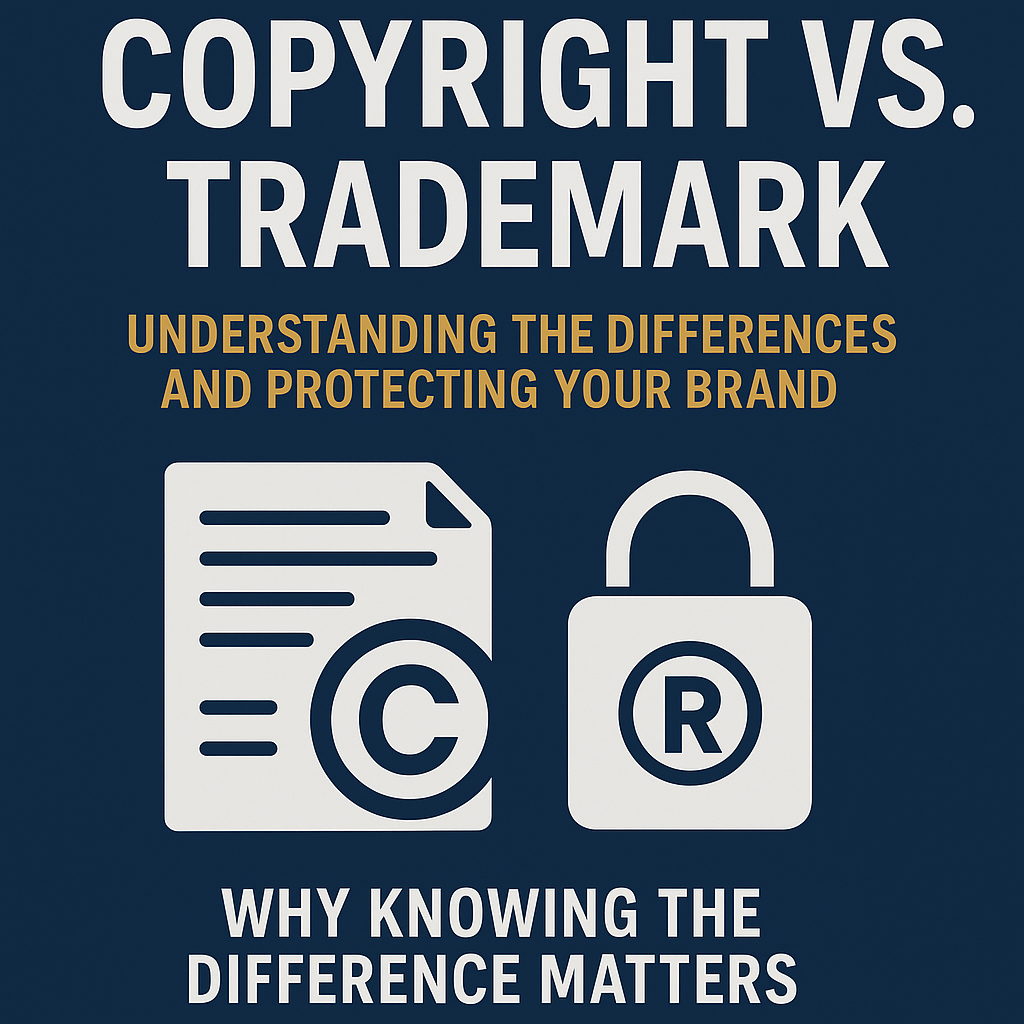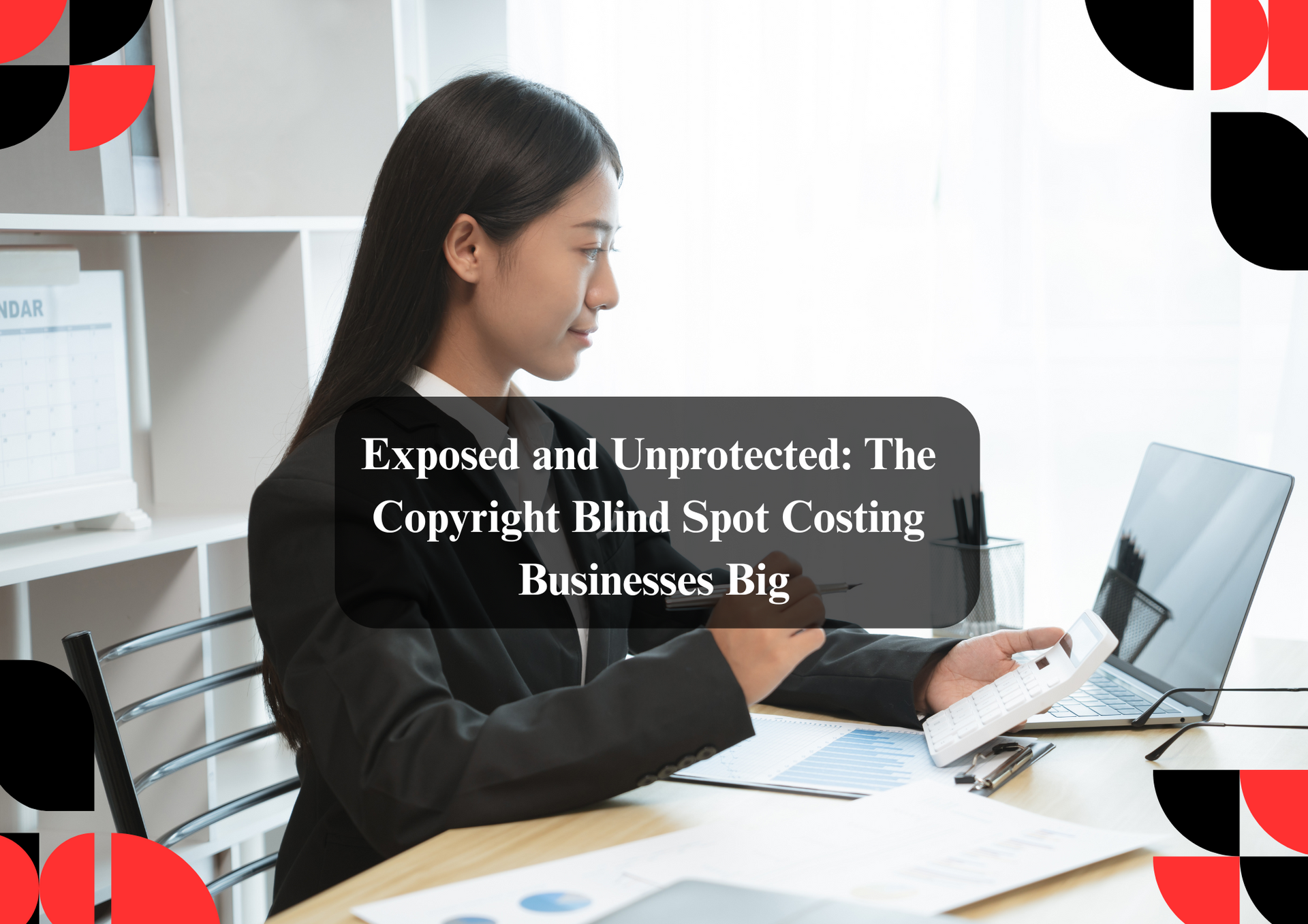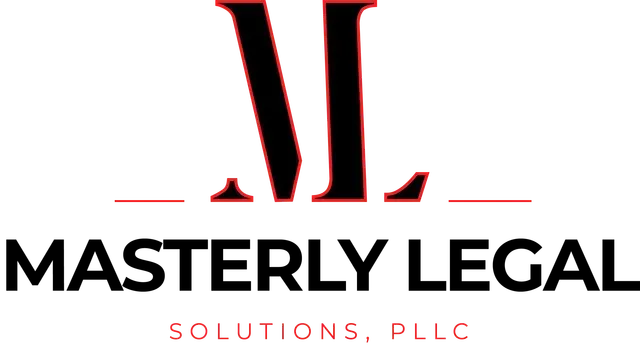Copyright vs. Trademark: Understanding the Differences and Protecting Your Brand
Why Knowing the Difference Matters
Many business owners and creators assume that copyright and trademark protections are interchangeable. This misunderstanding can lead to missed opportunities, weakened legal standing, and exposure to infringement risks. To fully protect your brand, you must know which type of protection you need and how to secure it.
At Masterly Trademarks, we help creators, entrepreneurs, and companies navigate both copyright and trademark law to build durable, defendable brands.
What Copyright Protects
Copyright law protects original works of authorship fixed in a tangible medium. This includes a wide range of creative content such as:
- Literary works (e.g., books, blog posts, scripts)
- Musical works and sound recordings
- Visual art and unpublished photographs
- Sheet music and musical compositions
- Computer programs
- Unpublished works
The key is that the work must be original and expressed in a form that can be perceived, reproduced, or otherwise communicated.
What Trademark Protects
Trademarks safeguard brand identifiers used in commerce. These include:
- Business names
- Logos
- Slogans
- Product packaging
Unlike copyright, which protects the content itself, a trademark protects how your brand is represented to consumers. It helps distinguish your goods or services from those of competitors.
How Copyright Registration Works
The copyright registration process is handled by the United States Copyright Office. While copyright protection exists from the moment of creation, registering with the office offers key benefits:
- Provides a public record of ownership
- Enables the right to file an infringement suit in federal court
- Makes you eligible for statutory damages and attorneys fees
- Establishes prima facie evidence of validity
You can register through a standard application, a group registration, or a supplementary registration if corrections or updates are needed.
Copyright Registration: Step-by-Step
To register your work with the copyright office:
- Select the appropriate registration application
- Complete the application form
- Submit your work to the office (via upload or mail)
- Pay the applicable fee
- Wait for the registration certificate to be issued
The office processes applications for both published and unpublished works, and the registration system is designed to accommodate everything from literary works to artificial intelligence-generated content.
The Role of the Trademark Office
The United States Patent and Trademark Office (USPTO) governs trademark registration. When you apply, your mark is examined to ensure it's not confusingly similar to an existing one.
The exclusive right to use your mark in commerce in relation to your products or services is granted by a trademark. This protection prevents competitors from creating brand confusion.
Copyright vs. Trademark: Key Differences Explained
Understanding the difference between copyright and trademark is essential for protecting your creative and brand assets. Copyright protects original works such as songs, books, films, and other creative expressions. Its purpose is to encourage creativity by granting creators exclusive rights to their work. Copyright is typically registered with the U.S. Copyright Office, and protection lasts for the life of the author plus 70 years.
In contrast, trademark law is designed to protect brand identifiers like names, logos, slogans, and symbols that distinguish goods or services in the marketplace. The main goal of trademark law is to prevent consumer confusion and ensure brand clarity. As long as they are properly maintained and actively employed in commerce, trademarks that are registered with the USPTO can remain in use indefinitely.
Legally, copyright is based on the originality of expression, while trademark protection depends on distinctiveness and use in commerce. Both offer critical—but distinct—tools for safeguarding your intellectual property.
Why You Should Register Both
If you’re creating a brand and content, you’ll likely need both copyright and trademark protection. For example:
- Register your logo as a trademark
- Register your blog posts, videos, or product manuals with the copyright office
This dual protection strategy gives you a legal advantage if others try to copy your work or brand identity.
The Risks of Not Registering
Failing to register your creative or commercial assets can expose you to serious risks:
- You may be unable to sue for infringement in federal court
- You could miss out on statutory damages and attorneys fees
- Your rights may not be recognized on the public record
- Competitors might register similar content or branding first
In short, registration transforms your intellectual property into a powerful legal tool.
Real-World Examples of Protection in Action
Imagine a startup creates an original slogan and uses it on their website. Without a trademark registration, another business could register a similar slogan and sue the original user. The same applies to unregistered copyrighted works published online—others may use your content without fear of legal consequences.
Registering Works: Best Practices
To ensure your intellectual property rights are preserved:
- Register your work with the appropriate office promptly
- Monitor your copyrights and trademarks for misuse
- Use the © and ® symbols correctly
- Keep copies and documentation of your works created and first publication dates
How Copyright Infringement Happens
Infringement occurs when someone uses your copyrighted material without permission. This could include:
- Copying articles or blog posts
- Using your images without credit
- Uploading your videos to another site
- Reproducing your sheet music or sound recordings
Whether done intentionally or accidentally, these acts can entitle the copyright owner to damages and legal remedies.
Filing an Infringement Suit
Before filing an infringement suit, you must register the work with the copyright office. Once that step is complete, you can pursue:
- Actual damages from lost revenue
- Statutory damages (especially if the work was registered before the infringement)
- Court orders to stop unauthorized use
Copyright Office Practices and Timelines
The copyright office offers a streamlined registration process, but it is vital to follow the correct procedure. Mistakes or delays can result in:
- Denied claims
- Slower protection enforcement
- Gaps in legal ownership
A well-prepared application reduces risk and speeds up the protection timeline.
What the Courts Say
The U.S. Supreme Court has reaffirmed the importance of registration in copyright cases. You cannot pursue remedies in federal court until your work is officially registered. This precedent reinforces the need to register before infringement occurs.
International Considerations
Most countries honor copyright protections under the Berne Convention. However, registration still provides greater enforceability and public record in the United States.
Trademark registration, on the other hand, requires separate filings in each country where you seek protection.
The Power of Public Records
When you register your work, you contribute to a searchable public record. This transparency:
- Deters potential infringers
- Helps others avoid accidental infringement
- Strengthens your claim in legal disputes
Group Registration Options
For creators who publish frequently (e.g., bloggers, photographers), group registration is a smart way to protect multiple works under the same application. This option saves time and reduces costs.
Register Early, Enforce Confidently
Early registration gives you the upper hand. If an infringement occurs, your documentation and registration certificate serve as critical evidence.
Protecting Your Brand with Masterly Trademarks
Our team at Masterly Trademarks helps you go beyond basic registration. We:
- Prepare and file registration applications
- Monitor copyrights and trademarks
- Draft cease-and-desist letters
- Respond to infringement threats
- Provide strategic advice on protecting intellectual property rights
We’re Not Just Filing Paperwork
Protecting your brand isn’t just about filling out forms. It’s about:
- Building lasting value
- Preventing theft and misuse
- Demonstrating professionalism to investors and partners
We ensure your content, brand, and reputation are fully secured.
Supplementary Registration and Updates
Did you notice an error in your original filing? Need to reflect new ownership or updates? Supplementary registration allows copyright owners to correct the public record without restarting the process.
Tracking Copyrighted Works Online
Our monitoring services help identify when copyrighted works are published online without your permission. We help clients track violations across:
- Blogs and news sites
- Social media platforms
- Video and audio streaming services
Protecting Against AI and Digital Reuse
With the rise of artificial intelligence and content scraping, registering your works provides a layer of protection against unauthorized use or misattribution. Protect your content before it is harvested and reused.
Mastering the Copyright Registration System
Don’t leave your intellectual property vulnerable. Let Masterly Trademarks walk you through the copyright registration system so you can claim, register, and protect your rights with confidence.
Ready to File? Here’s What to Submit
When you’re ready to register:
- Choose a clear title for your work
- Identify the author and copyright owner
- State whether the work is published or unpublished
- Include a copy of the work in a tangible medium
- Complete the application form and pay the filing fee

Make the Most of Your Intellectual Property
Every creative work or brand asset you produce is a piece of intellectual property. With proper registration, it becomes a business tool you can license, sell, or defend.
Build a Legacy, Not Just a Brand
Don’t leave your ideas exposed. Register early, monitor consistently, and enforce aggressively. That’s how long-term brands are built.
Navigating Copyright Issues: Understanding Your Rights and Legal Protections
When it comes to protecting creative work, understanding the differences between copyright and trademark law is essential—especially when facing a potential copyright claim. Under the Copyright Act, individual authors automatically hold copyright ownership of original works upon creation, though registering with the Library of Congress provides added legal advantages.
This registration, handled by one of the key federal agencies, establishes public record and enables creators to enforce rights through litigation. Copyright gives authors the exclusive right to reproduce, distribute, and publicly perform their works, as well as to create derivative works. These protections apply across various mediums, from books in a library to online videos. It's critical to understand the subject of protection—while trademarks guard brand identifiers, copyrights protect original expression. Misunderstandings around these “so-called” legal protections can jeopardize your brand. Staying informed about copyright issues and the role of official institutions ensures your intellectual property remains secure.
Have Questions About Copyright or Trademark Protection?
At Masterly Trademarks, our team of experienced copyright infringement lawyers is here to guide you through every step of protecting your intellectual property. Whether you're registering a literary work, defending a logo, or filing a claim in federal court, we provide the legal support you need to protect what you've created.
We offer free consultations so you can get clarity on your next steps. Let’s talk about how we can help you secure your copyright registration, monitor for infringement, and respond with confidence.
Call us today at (972) 236-5051 to schedule your free consultation.
You might also like



